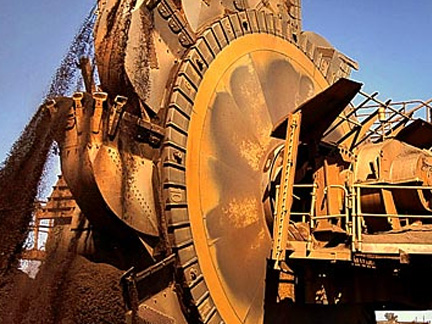
RIO Tinto Iron Ore chief executive and main board director Sam Walsh said yesterday that the future growth and prosperity of the Australian mining industry would be a product of what he called the ”Five Cs” – courage, certainty, competitiveness, collaboration and contribution.
But for mining company investors there are two other Cs that also matter: competency, and cash-flow deployment.
Like BHP Billiton, the group prefers to spend the money it makes on growing its business. Rio’s ”first and best” deployment of the cash the commodities boom is generating was investment in itself, chief executive Tom Albanese said last week.
Calls on Rio to return more money to shareholders through buybacks and higher dividends are going to increase from here on, however. Northern hemisphere investors are clamouring for income streams from strong cash-flow companies as returns on government paper stay low, and now that Rio has repaired its balance sheet it will come under the same pressure that BHP Billiton has been under for more than a year.
As for competency, Rio’s operational chops are not in question. But in the area of takeovers, Rio has never completely explained how its internal processes have changed to head off a repeat of what is, without doubt, the largest single mistake the company has ever made – the 2007 takeover of Alcan aluminium for $US38 billion.
Some changes have been made, in the way Rio’s board considers investment proposals, for example. The Alcan deal came to the full board for consideration after being vetted by an investment committee that counted the then chairman, Paul Skinner, as its chairman.
Under the new chairman, Jan du Plessis, the head of the investment committee is Rio’s chief executive, Tom Albanese, or, in his absence, chief financial officer and executive director Guy Elliott. That means takeover proposals now go straight from management to the full board.
But Rio has also changed course, to focus on smaller takeovers as a less risky overlay to in-house projects such as expansion of the Pilbara iron ore complex.
Elliott said last week that Rio would be making ”small to medium-size acquisitions”, and added some boilerplate assurances. Rio’s approach to M&A will be ”strictly value focused” – good to know. And Rio’s M&A options and its internal projects are assessed using a ”rigorous investment approval process” based on the modelling of discounted future cash-flow estimates that rely on commodity price forecasts; forecasts that in turn rely on Rio’s view of longer-term supply and demand.
Major projects are also subjected to two internal but independent reviews. But Elliott’s conclusion at Rio’s investor briefing last week that Rio’s assessment processes ensured ”that only the best projects that are expected to deliver value over the long term are approved” arguably depends on how similar, or different, those processes are to the ones that threw up Alcan.
Asked yesterday what Rio had learnt about Alcan, Walsh said Rio’s assessment processes had been upgraded, but he did not elaborate. He also made the point that Alcan had been acquired on the cusp of a financial crisis that nobody had predicted, and reminded his audience that Rio’s shareholders got to vote on the deal: 95 per cent of them approved it.
Walsh is right about the crisis. There were warning signs, but a shock of the magnitude that occurred wasn’t being predicted when Rio did the deal in the second quarter of 2007. When it did hit, Rio was exposed.
Alcan’s profit contribution plunged as the aluminium price fell, and the entire acquisition was being supported by short-term debt. Rio’s plan to ease the pressure quickly by offloading downstream Alcan assets was derailed as the markets froze; and when BHP pulled its takeover offer for Rio at the height of the global crisis in November 2008, Rio was friendless.
Crisis or no crisis, though, Rio paid too much for Alcan. It saw aluminium as a third ”category killer” commodity in its portfolio, alongside iron ore and copper, and as a simultaneously aggressive and defensive play, given that BHP had already made an informal takeover proposal, and was preparing to go public with its bid.
But it was too confident in deciding to fund the deal with short-term debt, and too confident that the aluminium price was about to join iron ore and other commodities in soaring.
The deal also occurred as energy prices were making their way up ominously, and as talk of a global carbon trading regime was growing. It is possible that that may have persuaded Rio to put too much strategic value on Alcan’s long-term, low-cost aluminium-smelter hydro-electricity supply contracts, particularly in the context of a contested private auction. Brazil’s Vale group was the underbidder, but not by much.
So Rio has not completely rebuilt its M&A credentials in the wake of the Alcan acquisition. But it has told investors that mammoth takeovers will be avoided, and that’s what post-crisis, risk-averse investors want. They’ll like Rio even better next year when it joins BHP in mailing more of its commodity boom cash to shareholders.






